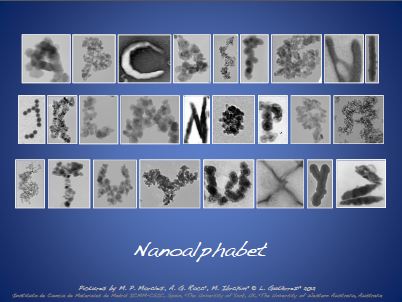
Report from the Magnetic Carrier Meeting 2012
May 29, 2012The now already 9th International Conference on the Scientific and Clinical Applications of Magnetic Carriers from May 22-26, 2012 was again a wonderful meeting full of great science and lots of interesting talks (76 of them, 6 invited talks and a tutorial). Minneapolis, MN, USA was a perfect location, and Prof. Jian Ping Wang, our host, and his lab organized a seemless program on the beautiful University of Minnesota campus. A highlight of the meeting was the beautiful boat trip on the Mississippi.
If you wonder what all we did - just in case you would like to come to our next meeting - then please check out the details here:
- Scientific Program 2012
- Posters 2012
- BioMax Satellite Symposium 2012
Two Best Paper Awards Available for ICMF-13
May 29, 2012
The 13th International Conference on Magnetic fluids has proposed to give two best paper awards to young researchers below the age of 35 years for the outstanding contributions in the field of ferro fluids research. Deadline for this award is June 30, 2012 and the meeting link is http://icmf13.com.
A brief manuscript containing four A-4 size pages with recent results may be submitted for the evaluation. The format is:
• Title
• Author Affiliation
• Brief Abstract (not more than 50 words.)
• Introduction
• Experimental Details
• Result and discussion
• Conclusion
You may register yourself to apply for the Young Scientist Award here.
Nanoparticle Growth Observed in TEM for the First Time
May 29, 2012
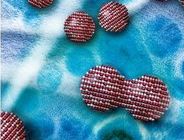
form and then attach to one another in solution
(Science, DOI: 10.1126/science.1219643). Such particle-level knowledge of nanocrystal growth should help scientists better control the synthesis and properties of nanomaterials.
De Yoreo’s team monitored the formation of iron oxy hydroxide nanoparticles. As small particles approach each other during synthesis, they orient so that their crystal lattices match. Once this happens, the tiny crystals accelerate toward one another and join. If small defects form during fusion, the particles shift afterward to fix them.
To see nanocrystals grow via particle-particle attachment, go to http://cenm.ag/grow.
Magnetic Bacteria May Be Building Future Bio-Computers
May 07, 2012
Magnet-making bacteria (Magnetospirillum) may be building biological computers of the future, researchers have said. A team from the UK's University of Leeds (Dr. Sarah Staniland) and Japan's Tokyo University of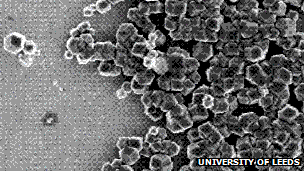 Agriculture and Technology (Dr. Masayoshi Tanaka) have used microbes that eat iron to perfect the magnetic particles that make up future hard drives.
Agriculture and Technology (Dr. Masayoshi Tanaka) have used microbes that eat iron to perfect the magnetic particles that make up future hard drives.
Furthermore, the researchers also managed to create tiny electrical wires from living organisms. They created nano-scale tubes made from the membrane of artificial cells, grown in a lab-controlled environment with the help of a protein present in human lipid molecules. "These biological wires can have electrical resistance and can transfer information from one set of cells inside a bio-computer to all the other cells." Besides computers, such biological wires could even be used in future for human surgery because they are highly biocompatible.
German Research Council (DFG) Establishes New Priority Program
May 01, 2012
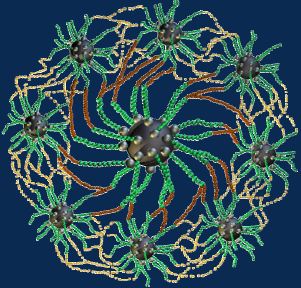
Within the frame of the initiative new multifunctional hybrid materials with a possibility for magnetic control will be in focus for the research activities. Such materials, consisting of a particulate magnetic component in a complex matrix exhibit a controllable material behaviour due to the interaction between particles and matrix. It will be the core interest of the programme to synthesise and understand the magnetic control of the material properties on the basis of a detailed understanding of the particle matrix interaction. Moreover the experimental analysis and multi scale modelling of the material will provide a basis to develop new applications for sensors and actors and to increase the efficiency of the biomedical application of magnetic nanoparticles by an enhanced knowledge about the interaction between tissue and functionalised particles.
Thus the programme will be borne by a highly interdisciplinary approach ranging from chemistry and physics towards engineering and medicine.
Highlights from the 2nd International Workshop on Magnetic Particle Imaging
April 06, 2012
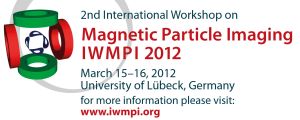 On March 15th and 16th 2012 the “2nd International Workshop on Magnetic Particle Imaging” (www.iwmpi.uni-luebeck.de) was held at the University of Lübeck in Germany. This international meeting was chaired by Prof. Thorsten M. Buzug (University of Lübeck) and Dr. Jörn Borgert (Philips Research Hamburg). The workshop aimed at covering the status and recent developments of both, the instrumentation and the tracer material used in Magnetic Particle Imaging (MPI), as each of them is equally important.
On March 15th and 16th 2012 the “2nd International Workshop on Magnetic Particle Imaging” (www.iwmpi.uni-luebeck.de) was held at the University of Lübeck in Germany. This international meeting was chaired by Prof. Thorsten M. Buzug (University of Lübeck) and Dr. Jörn Borgert (Philips Research Hamburg). The workshop aimed at covering the status and recent developments of both, the instrumentation and the tracer material used in Magnetic Particle Imaging (MPI), as each of them is equally important.
The meeting was a huge success, with 162 scientists attending from 12 countries!
To inform yourself about what is going on in this new area for magnetic particles, see a full report which was kindly communicated by Silvio Dutz, Jena, on March 31, 2012, here.
Magnetic Nanochain Synthesis
March 11, 2012
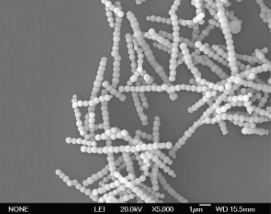
Check the details of this preprint in the Journal of Colloid and Interface Science here.
Magnetic Nanoalphabet
March 02, 2012This is a very exciting news item. Lucia Gutiérrez from the University of Western Australia and the Instituto de Ciencia de Materiales de Madrid ICMM-CSIC in Spain just finished the first magnetic nanoalphabet (or "Nanoalfabeto", as she calls it). All the magnetic nanoparticles spelling out the letters of the alphabet were imaged in different transmission electron microscopes (TEM). Most pictures are from Lucia, but M. Puerto Morales in Madrid, Spain, Alex G. Roca in York, UK, and Mounir Ibrahim in Perth, Australia also contributed pictures to complete the alphabet.
Please go ahead, download the file, and send it to all your friends. It makes a great poster for anybody interested in magnetic nanoparticles or electron microscopy! Get the file here.
For more information, check out our Archives.
September 2017

Search this site with the power of


